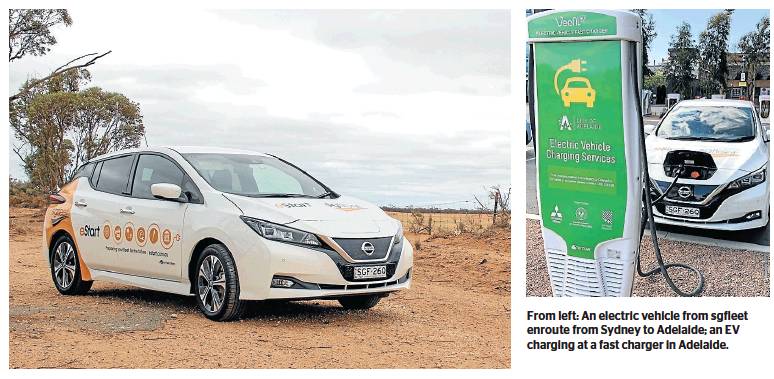Is your fleet EV ready for the new ride?
As the world moves towards a greener future, one big change to be undertaken will be around transport.
From the trucks that carry our goods to the cars we use to commute, alternative energy sources for vehicles are being fasttracked, transforming our roads and way of life.
For businesses, that presents some challenges. Electric vehicles, for example, can offer significant reductions in emissions, but they also have to make commercial sense. Finding that balance is no easy task.
‘‘The first thing people should ask is what they actually want to achieve by putting zero-emission vehicles onto their fleet,’’ says Andy Mulcaster, Managing Director of sgfleet Australia, one of the world’s leading commercial fleet managers.
‘‘Once you’ve answered that, you can determine how much pressure you’re under to put electric vehicles on, how many you need to achieve that outcome, how much it’s going to cost and what infrastructure you’ll need to use.’’
The next step is to identify which vehicle best meets your needs. All-electric cars that charge from the wall, hybrids with electric and traditional engines, or a mix?
‘‘Once you’ve identified the vehicles, the infrastructure quickly becomes the fundamental topic to discuss,’’ says Andy Graham, sgfleet’s Group Head of Innovation and Technology.
‘‘The buildings, for example – if you don’t own the building you can’t just put charging stations in there. You need to liaise with the owner and facilities manager. There are so many variables involved.’’
To help navigate those variables, sgfleet has developed eStart – practical help for customers around transitioning zero emission vehicles (ZEVs) or hybrids into their operations.
With three of the leading ZEVs – the Hyundai Kona and Ioniq, and the Nissan Leaf – in their own stable of office cars, the eStart team has learnt first-hand about the challenges and benefits of going greener.
Some challenges became obvious earlier this year when sgfleet drove two of their ZEVs to Adelaide for the National Public Sector Fleet Managers Conference; the Leaf, from Sydney and Kona, from Canberra. The drivers logged how much their trips cost, how long it took and what problems they faced.
‘‘What it showed is the importance of picking the right car for the job,’’ Mulcaster says. ‘‘The Kona, with its longer range, had no concerns whatsoever. The Leaf, which has a lower range, meant we had to plan more. Since then, there are two new charging points along that route which means we could have done the trip in two days, not four. And that infrastructure is growing all the time.’’
In cities, where most fleet cars are driven, things are a lot easier. ‘‘For average driving, with the Konas we can get away with charging once a week and it just works beautifully,’’ says Mulcaster.
That’s good news for businesses: ‘‘We’ve got a number of customers who want to put a toe in the water with one or two [cars], others who are fully committed and those who are watching. The more trips we do, the more cars we use, the easier it is to put together a business case to show it’s viable. Electric, hybrid and other cars are coming and we want to make sure people are ready.’’
